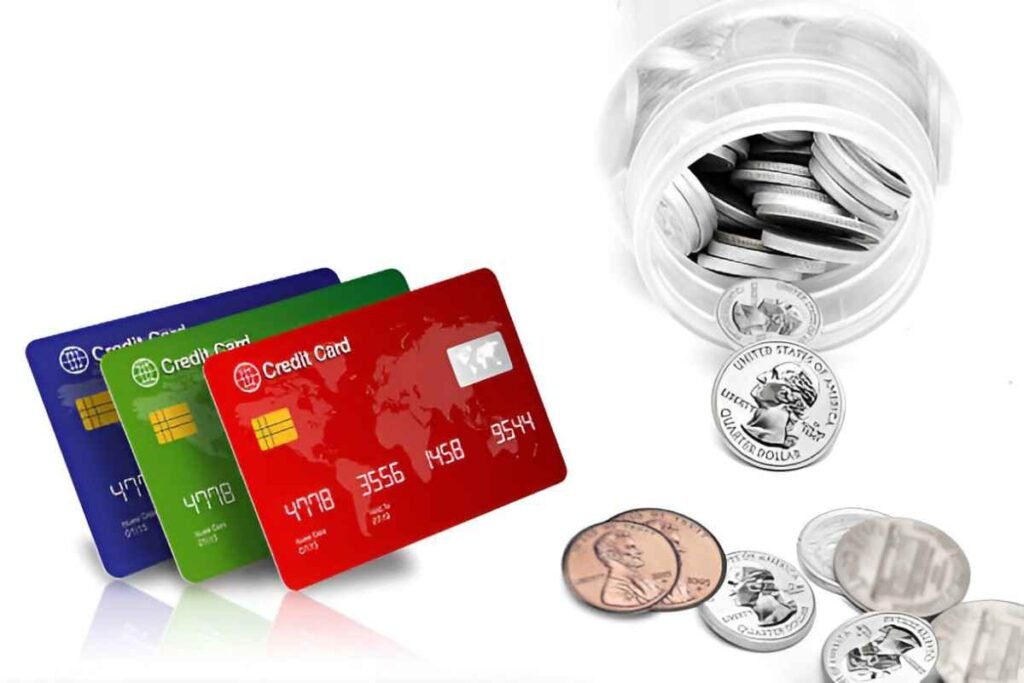Bankruptcy can be an overwhelming experience. It often feels like the financial world is closing in, and it can take years to recover. The good news is that it is possible to rebuild your credit and get back on your feet with the right tools and strategies. After bankruptcy, one of the most important steps in the recovery process is rebuilding your credit score. One effective way to do this is by applying for after-bankruptcy credit cards. These cards are specifically designed for individuals who have filed for bankruptcy, offering them an opportunity to rebuild their credit history.
In this article, I’ll walk you through everything you need to know about after-bankruptcy credit cards, including what they are, how they work, and how to use them effectively to rebuild your credit.
Table of Contents
What Are After-Bankruptcy Credit Cards?
After-bankruptcy credit cards are a type of credit card designed for individuals who have experienced bankruptcy. Whether you’ve filed for Chapter 7 or Chapter 13 bankruptcy, these cards help you regain access to credit while giving you a chance to improve your creditworthiness.
When you file for bankruptcy, your credit score takes a significant hit. Bankruptcy remains on your credit report for seven to ten years, depending on the type of bankruptcy you filed. During this time, it can be difficult to get approved for new credit. However, after-bankruptcy credit cards are an option that can help you get started on your journey to financial recovery.
These cards often come with higher interest rates and lower credit limits compared to standard credit cards, but they serve as an opportunity for you to demonstrate responsible credit use. By making timely payments and managing your credit card wisely, you can slowly rebuild your credit over time.
How Do After-Bankruptcy Credit Cards Work?
After-bankruptcy credit cards function much like regular credit cards. You are given a credit limit, and you can use the card to make purchases or cover expenses. The key difference is that these cards are issued to people with a history of bankruptcy. They typically offer a secured credit line, meaning you need to make a deposit as collateral to obtain the card. This deposit acts as a safety net for the issuer in case you default on your payments.
In many cases, secured after-bankruptcy credit cards allow you to build your credit by reporting your payment history to the major credit bureaus (Experian, Equifax, and TransUnion). As long as you pay your bills on time and keep your credit utilization low, you can gradually improve your credit score.
Types of After-Bankruptcy Credit Cards
There are two main types of after-bankruptcy credit cards: secured credit cards and unsecured credit cards.
Secured Credit Cards
Secured credit cards require you to deposit money upfront, which acts as your credit limit. For example, if you deposit $500, your credit limit would be $500. This deposit reduces the risk for the lender because, in the event that you fail to make payments, they can use the deposit to cover the debt.
Secured cards are often the easiest type of credit card to obtain after bankruptcy. The issuer is more likely to approve you because they have the deposit as collateral. The downside is that your credit limit is often limited to the amount you deposit, which may not give you the financial flexibility you need.
Unsecured Credit Cards
Unsecured credit cards, on the other hand, do not require a deposit. However, they tend to have higher interest rates and fees compared to regular credit cards. These cards are harder to get after bankruptcy because the lender is taking on more risk without the security of a deposit. If you’re able to get approved for an unsecured card, it can be a sign that you’re making progress in rebuilding your credit.
Unsecured cards may offer higher credit limits and better perks, such as rewards points, cashback, or travel benefits. However, they typically come with stricter approval criteria, including a higher credit score and a record of recent financial responsibility.
How to Choose the Right After-Bankruptcy Credit Card
When choosing an after-bankruptcy credit card, it’s important to consider several factors to ensure you’re selecting the right option for your financial situation. Here are some key things to look for:
1. Credit Limit
For secured cards, your credit limit will be determined by the deposit you make. The higher the deposit, the higher your credit limit. Unsecured cards may offer higher credit limits based on your creditworthiness, but they come with stricter approval requirements.
2. Interest Rates and Fees
After-bankruptcy credit cards tend to have higher interest rates and fees than regular cards. It’s important to compare rates before choosing a card. Some cards may have annual fees, monthly maintenance fees, or other hidden costs. Be sure to read the terms and conditions carefully to understand what you’re paying for.
3. Reporting to Credit Bureaus
One of the key features of after-bankruptcy credit cards is their ability to report your payment history to the major credit bureaus. This is how your credit score can improve over time. Ensure that the card you choose reports to all three major bureaus so that your progress is tracked.
4. Rewards and Perks
Some after-bankruptcy credit cards offer rewards or other perks, such as cashback, travel points, or purchase protection. While these benefits may be secondary to rebuilding your credit, they can be an added bonus once you’ve demonstrated responsible use of the card.
Using After-Bankruptcy Credit Cards to Rebuild Your Credit
Using after-bankruptcy credit cards wisely is crucial to rebuilding your credit. Here are some tips on how to make the most of your after-bankruptcy credit card:
1. Make Timely Payments
The most important factor in rebuilding your credit is making your payments on time. Late payments can have a negative impact on your credit score, and it’s especially important after bankruptcy to show that you’re capable of managing credit responsibly.
2. Keep Your Credit Utilization Low
Credit utilization refers to the percentage of your available credit that you use. It’s recommended to keep your credit utilization under 30%. For example, if your credit limit is $500, aim to keep your balance below $150. High credit utilization can hurt your credit score, even if you make payments on time.
3. Avoid Missing Payments
If you can’t make a full payment on your credit card, make at least the minimum payment. Missing payments can cause your credit score to drop significantly, and it can make it harder to get approved for better credit cards in the future.
4. Monitor Your Credit Score
Keep track of your credit score as you use your after-bankruptcy credit card. Over time, you should see your score improve as long as you make responsible payments. Many credit card issuers offer free credit score tracking, or you can check your score through a third-party service.
5. Avoid Accumulating Debt
The goal of using an after-bankruptcy credit card is to rebuild your credit, not to accumulate more debt. Be mindful of your spending and only charge what you can afford to pay off each month. Carrying a balance from month to month can make it harder to rebuild your credit.
Pros and Cons of After-Bankruptcy Credit Cards
Like any financial product, after-bankruptcy credit cards have their pros and cons. Here’s a quick breakdown:
Pros:
- Opportunity to rebuild credit: These cards help you improve your credit score after bankruptcy.
- Secured options: Secured cards are easier to obtain and come with lower risk for the issuer.
- Access to credit: After bankruptcy, it can be difficult to get approved for other types of credit, but after-bankruptcy credit cards offer a way in.
Cons:
- High interest rates: After-bankruptcy credit cards often come with higher interest rates.
- Higher fees: Some cards have annual fees or other charges.
- Limited credit limit: Secured cards are limited to the amount you deposit, which may restrict your spending power.
Example: Using an After-Bankruptcy Credit Card
Let’s say you apply for a secured credit card with a $500 deposit. Your card’s credit limit is $500, and the interest rate is 24.99%. You decide to make a purchase of $200 in the first month and then pay it off in full by the due date.
- Credit Limit: $500
- Purchase: $200
- Balance: $200
- Minimum Payment: $25 (Assuming a minimum payment of 5% of the balance)
By paying off the $200 balance on time, your credit utilization stays low, and your payment history will be reported to the credit bureaus. After several months of responsible usage, you’ll begin to see your credit score rise, and your issuer may increase your credit limit or offer you an unsecured card.
Final Thoughts
After-bankruptcy credit cards offer a valuable opportunity for individuals to rebuild their credit and regain control of their finances. While these cards come with higher fees and interest rates, they can serve as a stepping stone to better credit options down the road. By using them responsibly, you can gradually improve your credit score and work towards financial stability.
Remember, rebuilding your credit is a journey. It takes time, patience, and careful management of your finances. But with the right approach and the right tools, like after-bankruptcy credit cards, you can emerge from bankruptcy stronger and more financially secure.





